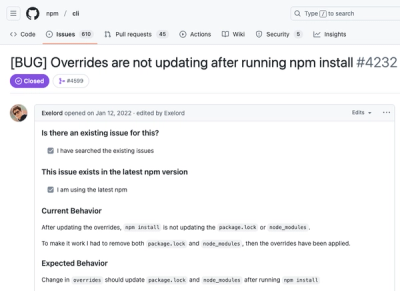



Alga CSS
Alga CSS is a scope or component oriented CSS toolkit for quickly reuse CSS components via @use directive and it can be stored in .alga format file as a custom CSS component using @alga directive and also it has many built-in customizable CSS properties that can be directly inserted to HTML Element class, visit https://algacss.com.
Now, Alga CSS support converting .alga component file with @alga directive to a .css file with @layer cascading inheritance, this is for you that don't want to use Alga CSS directly on your project. But, Alga CSS has a lot of modern and powerful features that you may want to try.
This Alga CSS is still in a beta version, so it is not stable yet, a lot of features or built-in components need to be added and for the documentation is also still in the development stage, so we expected it will finish around 2024. Because of that, if you use this Alga CSS, please check the examples folder, I put all the HTML/UI testing files in that folder and test folder as well.
All the main features:
- Created for scoped CSS
- As a PostCSS plugin
- Can be stored as an Alga component (
@alga directive and .alga format file)
- And then can be converted to CSS component (
@layer cascading inheritance)
- Extract classes from any major JS Frameworks
Installation and Setup
Alga CSS built on top of PostCSS, so before installing Alga CSS, you need to have PostCSS first and after that you can use NPM or Yarn to install this Alga CSS.
npm install alga-css --save-dev
yarn add alga-css
npm install alga-css@next --save-dev
If you use tool that support PostCSS out of the box like Vite for instance, you just need to create a new config file which is postcss.config.cjs and add the code below to that file.
const algacss = require('alga-css')
module.exports = {
plugins: [
algacss({
important: false,
directive: 'use',
mode: '[data-mode={theme}]',
extract: [
'./src/**/*.html',
'./src/**/*.{otherFormat}'
],
src: './src/styles/*.alga',
plugins: []
})
]
}
Compiling to CSS Cascading Inheritance
Alga CSS support converting component from .alga format file to .css file and it will compile all the code within @alga directive and place it inside @layer cascading inheritance and it can be imported directly to another CSS file or maybe injected to JS Framework via specific tools.
npx alga-css navBar ./path/to/navBar.css
npx alga-css ./folder/navBar.alga ./folder/navBar.css
The command line above will generate a new CSS file with @layer cascading inheritance inside it after being executed in the terminal.
@layer navBar {
.navBar {
...
}
}
CSS Component
We provide .alga format file for storing styles as a component within @alga directive and can be converted to @layer cascade inheritance within .css file, this only happen if the important option has been set to false, this is because in the pass all utility-classes of Alga CSS rely on !important to override the css property value from certain component.
@define refs {
name: navBar;
}
@define props {
size: 0.75rem;
}
@alga {refs.name} {
.{refs.name} {
ref: position-relative zIndex-3;
ref-paddingTop: {props.size};
ref-paddingBottom: {props.size};
}
}
@use navBar {
size: 20px;
}
@layer navBar {
.navBar {
position: relative;
z-index: 3;
paddingTop: 20px;
paddingBottom: 20px;
}
}
State Management
Usually we use props to permanently changes the specific property value, but sometime we want to change all the values at one without having to replace it one by one, so here is why we provide state management and it must be put on top of all components.
@use base;
@use container;
@use componentOne {
bgActive: red;
}
@use componentTwo {
bgActive: red;
}
@use componentThere {
bgActive: red;
}
@use helpers;
Rather than passing value via props to each component one by one, we can use @define state instead, so we can rewrite all the component property values by just one line of code.
@define states {
bgActive: red;
}
@use base;
@use container;
@use componentOne;
@use componentTwo;
@use componentThere;
@use helpers;
@layer instead of @use
Moreover, you may want to use only valid CSS syntax in any style sheets both global style or scoped style, so Alga CSS also provide a customizable directive, but only 2 values accepted which is either use or layer available.
@define states {
bgActive: red;
}
@layer base;
@layer container;
@layer componentOne;
@layer componentTwo;
@layer componentThere;
@layer helpers;
@layer base, container, componentOne, componentTwo, componentThere;
@layer helpers;
Just one caveat, for @layer helpers; cannot be stack together with other components and also for props only can be passed via state management or @define states.
Class Name Structure
Alga CSS uses special character - to gab classes from HTML elements or Vue components, and it uses : for breakpoints and states and also _ as a divider or separator of css values.
<span class="marginTop-0.75rem padding-10px md:marginTop-5pct color-rgb(205,45,67) backgroundColor-hexfff"></span>
.className {
ref: marginTop-0.75rem padding-10px color-rgb(205,45,67) backgroundColor-hexfff;
screen-md: marginTop-5pct;
}
/* class structure: property (camelCase for prop name and prop value separated by - or dash) */
justifyContent-spaceBetween
/* class structure: unit size (pct is unit size in percent) */
width-100pct
height-250px
padding-1.75rem
/* class structure: screen, ss (extra small), sr (smaller), sm (small), md (medium), lg (large), lr (larger), ls (largest), wd (wide), wr (wider) */
ss:paddingLeft-3px
/* class structure: mode */
dark:backgroundColor-hex242424
light:backgroundColor-hexf2f2f2
/* (prefers-color-scheme: light) { [data-mode=dark] .backgroundColor-hex242424 {} } */
toDark:backgroundColor-hex242424
/* (prefers-color-scheme: dark) { [data-mode=light] .backgroundColor-hexf2f2f2 {} } */
toLight:backgroundColor-hexf2f2f2
/* class structure: state */
hover:backgroundColor-hex2f2f2f
facus:paddingLeft-3px







